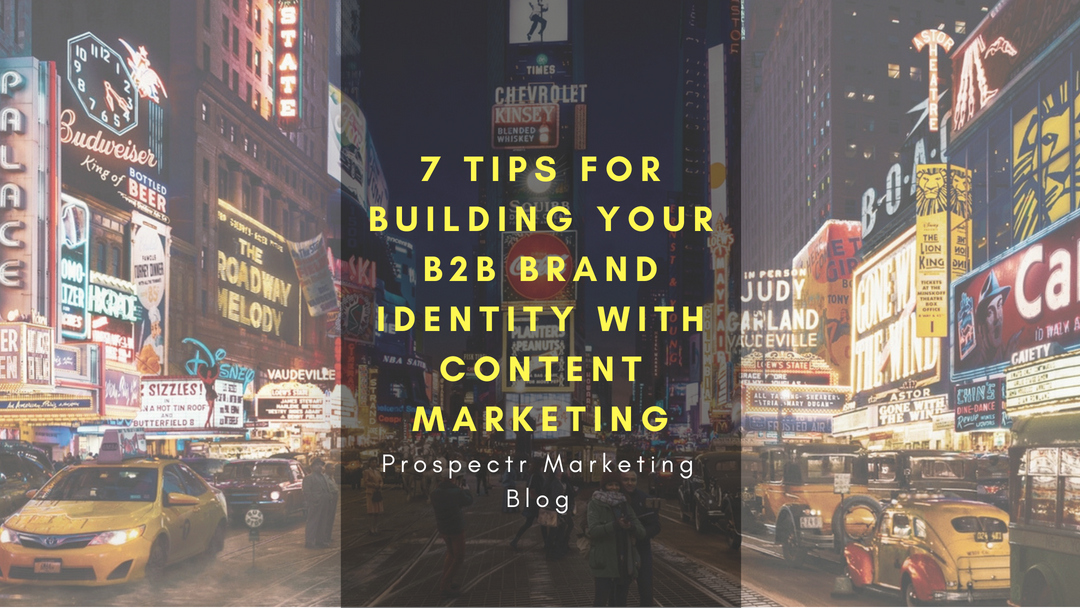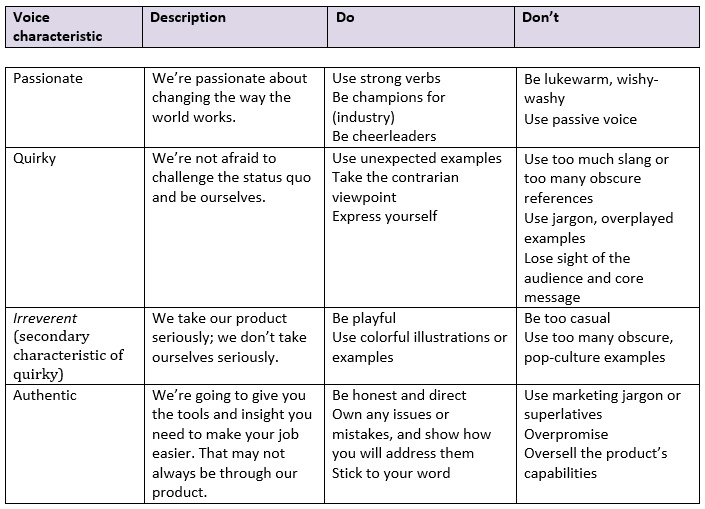
If you think a B2B brand identity is merely aesthetic elements like a logo, then we’re really happy you’re here. A business without good branding can feel a lot like the tin man before he gets a heart, just an axe wielding robot (a subtle exaggeration but I think I’ve made my point). So if your business is feeling a bit robotic please follow us down the yellow brick road of branding tips and let’s put a beating heart in your business.
1. Your B2B Brand Should Have a Personality

As a B2B company it can be easy to forget that we are not only marketing to a business but to people within that business. In the B2C world companies put their demographic consumer at the forefront of their marketing and branding plan, it should be no different for B2B. At the end of the day a person is making the ultimate decision of whether or not to do business with you and that’s why it’s so important that your brand has a personality.
No matter what personality type your brand takes on make sure you’re incorporating a human voice in all of your content. A great way to incorporate personality into your brand is with humor. It may feel a bit out of place in the business world but done correctly and professionally it can have a lasting impact. After all who doesn’t enjoy a good laugh?
If you’re having issues properly defining your brand voice there is a cleverly named tool called the brand voice chart. This chart can help you identify your brand’s personality and where any brand inconsistencies may lie. Take a look at the brand voice chart below or check out this article on how to define your brand’s voice to get a better understanding.

2. Your B2B Brand Should Be Unique

A very common theme in branding is to say simply “We’re the best!”. It is good to be “the best”, and saying so must have some merit since it’s drastically overused in marketing and branding. We certainly don’t see a lot of companies saying “We’re second best!” but perhaps that might grab some more attention. The point is the B2B market is flooded with similar goods and services, and we’re constantly being overstimulated with content, so to break through the noise to obtain new leads you have to stand out.
So what are other ways to stand out beside being “the best”? Use your brands personality to start a narrative, a conversation, a community that people want to be a part of and keep your content interesting and consistent. This will build trust amongst your customers and trust equals loyalty.
3. Avoid Inconsistencies

Inconsistencies can lead to distrust and can be incredibly damaging to your company. Brand inconsistencies go beyond logos and aesthetics. It’s important that the company, across departments, has a cohesive voice and vocabulary when creating content and communicating with customers. To make sure your team is consistently representing your brand voice create a content sample, which is simply a collection of the content that best illustrates your brand. This can be passed out to your team or posted for reference.
It is also pertinent to take a moment to address a brands digital presence. Your website along with whatever social media outlets you employ should always be professional and on brand. Social media can be a great way to show the playful side of your brand’s personality, just be sure you’re not muddling your message.
4. Identify & Assess Your B2B Brand Values

When it comes to maintaining your brand it can be a bit overwhelming to figure out where the majority of your time should be invested. You can better identify your brands needs by taking a closer look at your brand voice chart and content sample. From these, pull out key words and examples of content that most accurately embody your brand’s values. From this collection pick out the top 3 words that best describe your brand’s values and assign them a dollar figure. We find it easier to asses worth with a monetary value attached to it. This technique could also be applied if you’re trying to find where you need to make cuts or where to take focus away from.
5. Establish a Brand Promise

Every successful business has a mission statement, likely showcased somewhere in their lobby or on their websites homepage. Your mission should be present in everything your company touches. Incorporating a brand promise that aligns with your mission statement can be a powerful way to establish trust and encourage brand loyalty. A brand promise encapsulates what your brand can uniquely guarantee its customers and the values that your company stands for. Disclosing how every customer will benefit along with a public pledge to satisfy can truly help your brand to thrive, scouts honor.
In recent years General Electric has done a great job of humanizing their tech brand. Their mission statement (below) is a great example of how they’ve done this. They start off by using strong words associated with tech and industry and finish their statement by making a compassionate promise to their customers.
“GE’S MISSION IS TO INVENT THE NEXT INDUSTRIAL ERA, TO BUILD, MOVE, POWER AND CURE THE WORLD.”
Quote Source: https://www.ge.com/ar2014/ceo-letter/.
6. Revisit & Revise Your Brand Over Time

With every new business comes the aspiration to succeed and with all growth comes change. A business must constantly reevaluate its strategy and assets as it continues to become more profitable. Contrarily, if your business is failing, you should also reconsider your brand strategy. Forgetting to reassess your brand can be detrimental to furthering growth.
A brand doesn’t only change because a business does but also because the world around that business changes. In today’s digital world revising your brand to make sure you’re keeping its voice and personality fresh is more important than ever. Stay relevant by evolving with the times, aka stay trending.
7. Conduct a “No Logo Test”

Finally, if you’re not sure if your brand’s well rounded and impactful conduct a “No Logo Test”. Simply remove your logo from your product or content and see if your brand is still recognizable. If not, consider again, creating and implementing a content sample and brand voice chart to establish a stronger brand and eliminate inconsistencies.
Conclusion
As we’re ending our journey here, I’d like to leave you with an example of how even companies with exceptional branding can find themselves toes up without routine brand maintenance.
The name Xerox has become synonymous with copying and printing. Like Google, it has become its own verb. This may seem like the Holy Grail of branding, but what Xerox found when attempting to expand their business portfolio was that investors were skeptical of their other professional capabilities.
After some rebranding and with the help of content marketing, Xerox was able to evolve their brand to include other business aspects such as operating call centers and processing insurance claims.
Your brand is the heart and soul of your business. There are a lot of mechanical parts working routinely to keep a business alive but the brand is the personified essence that draws customers in and keeps them coming back for more. If you’re worried your brand may be comatose contact us for details on how we can give your business new life.





Leave A Comment